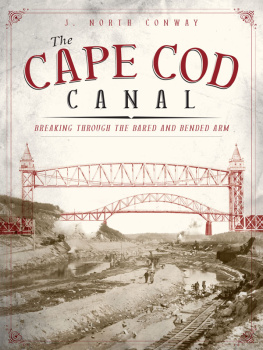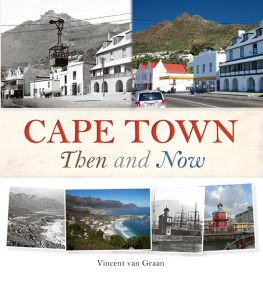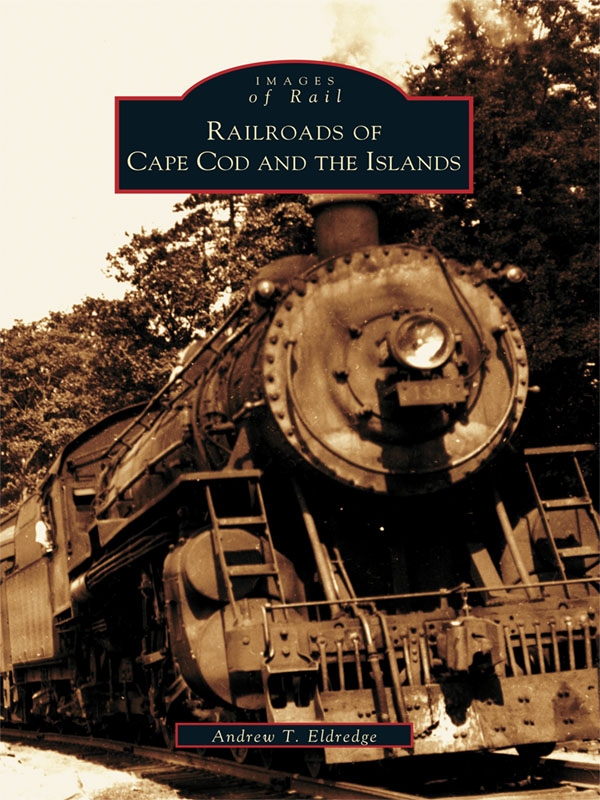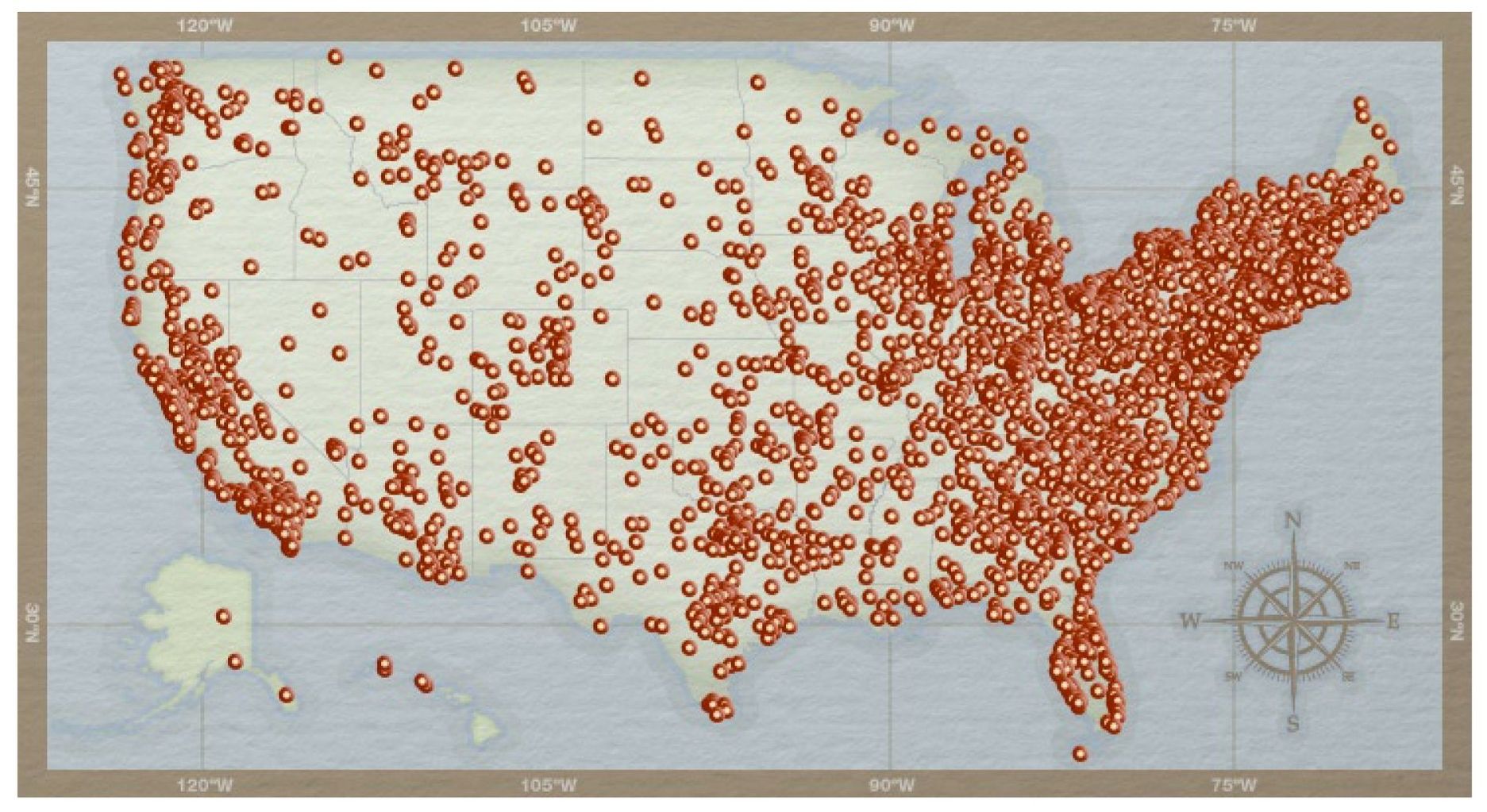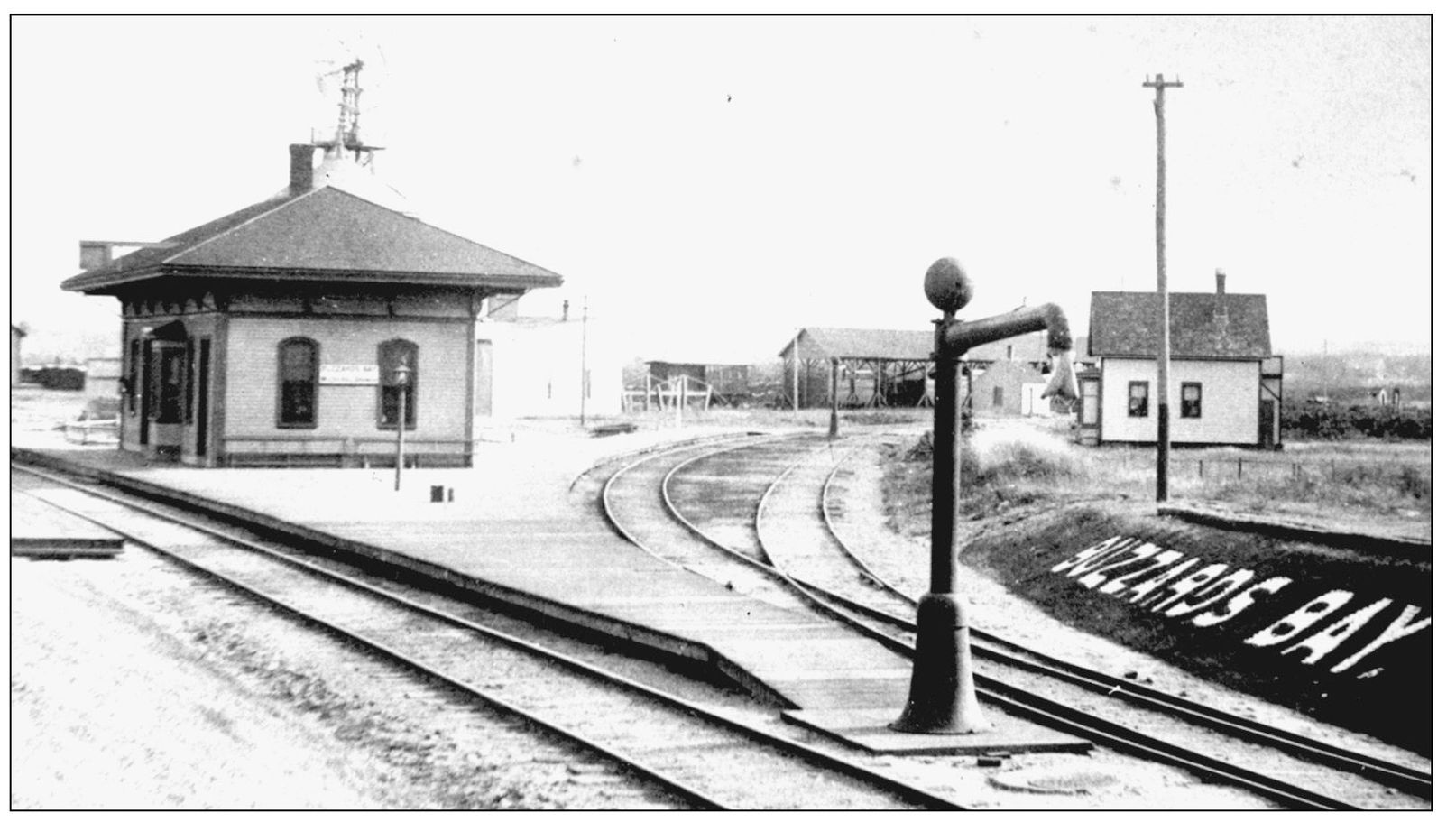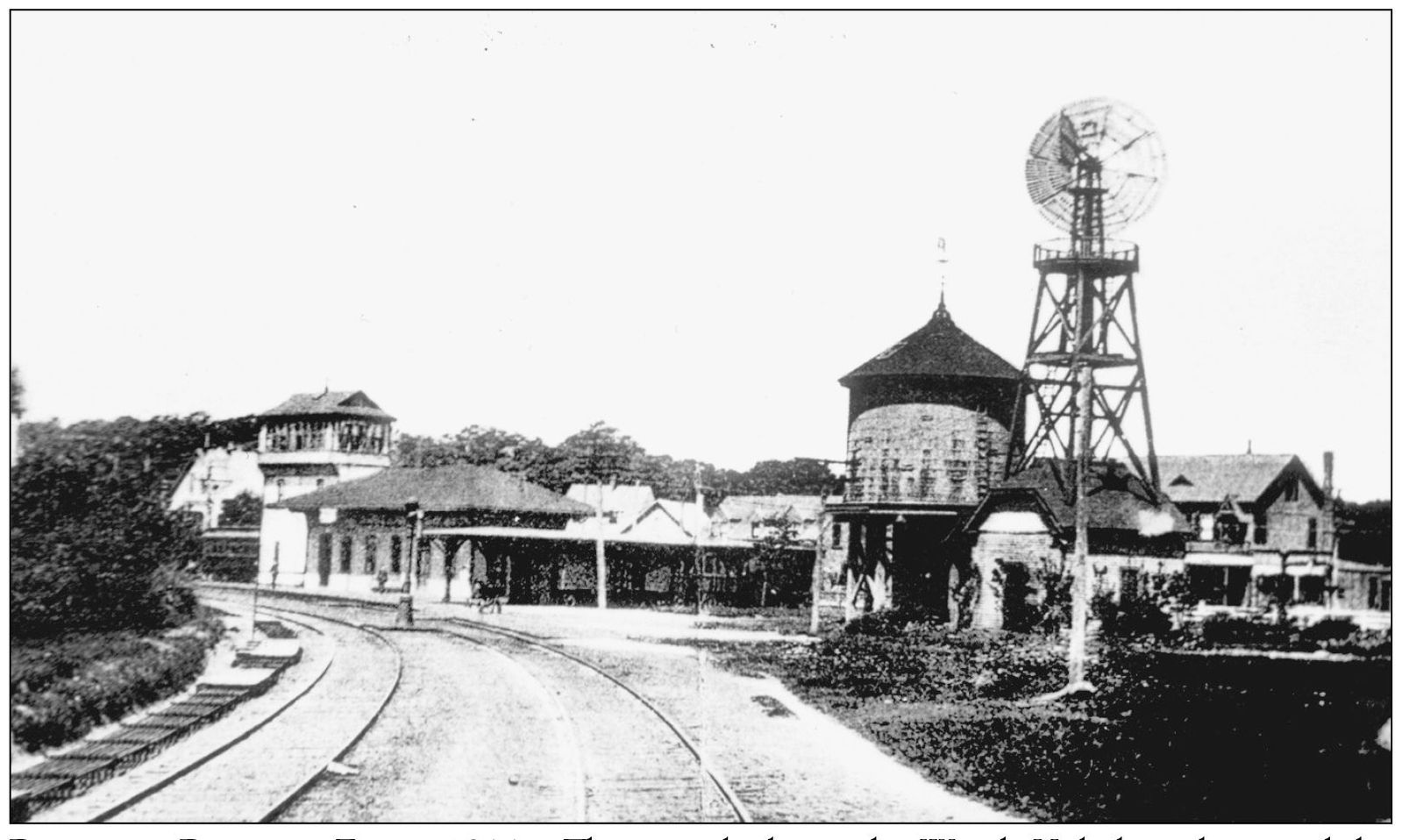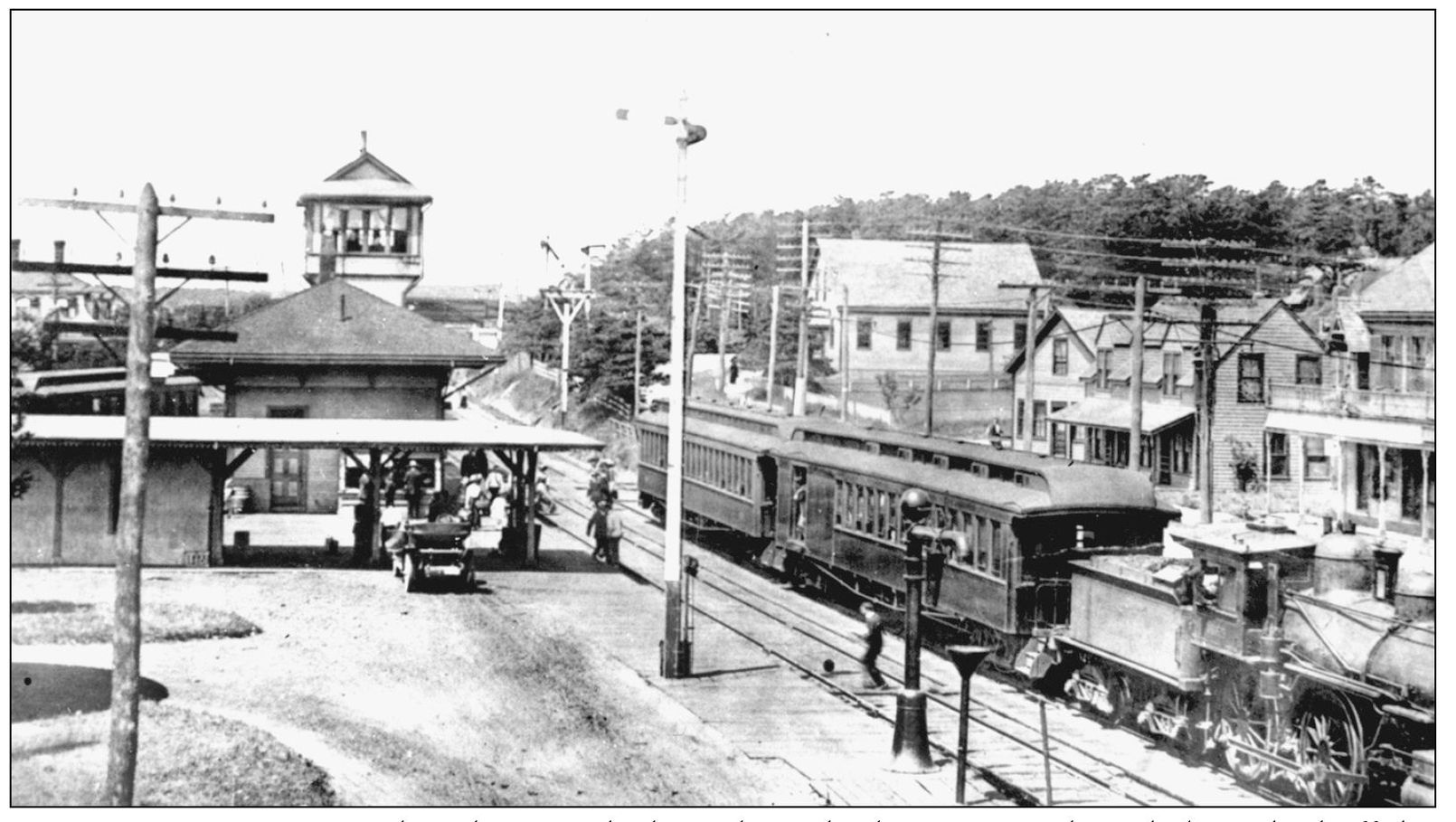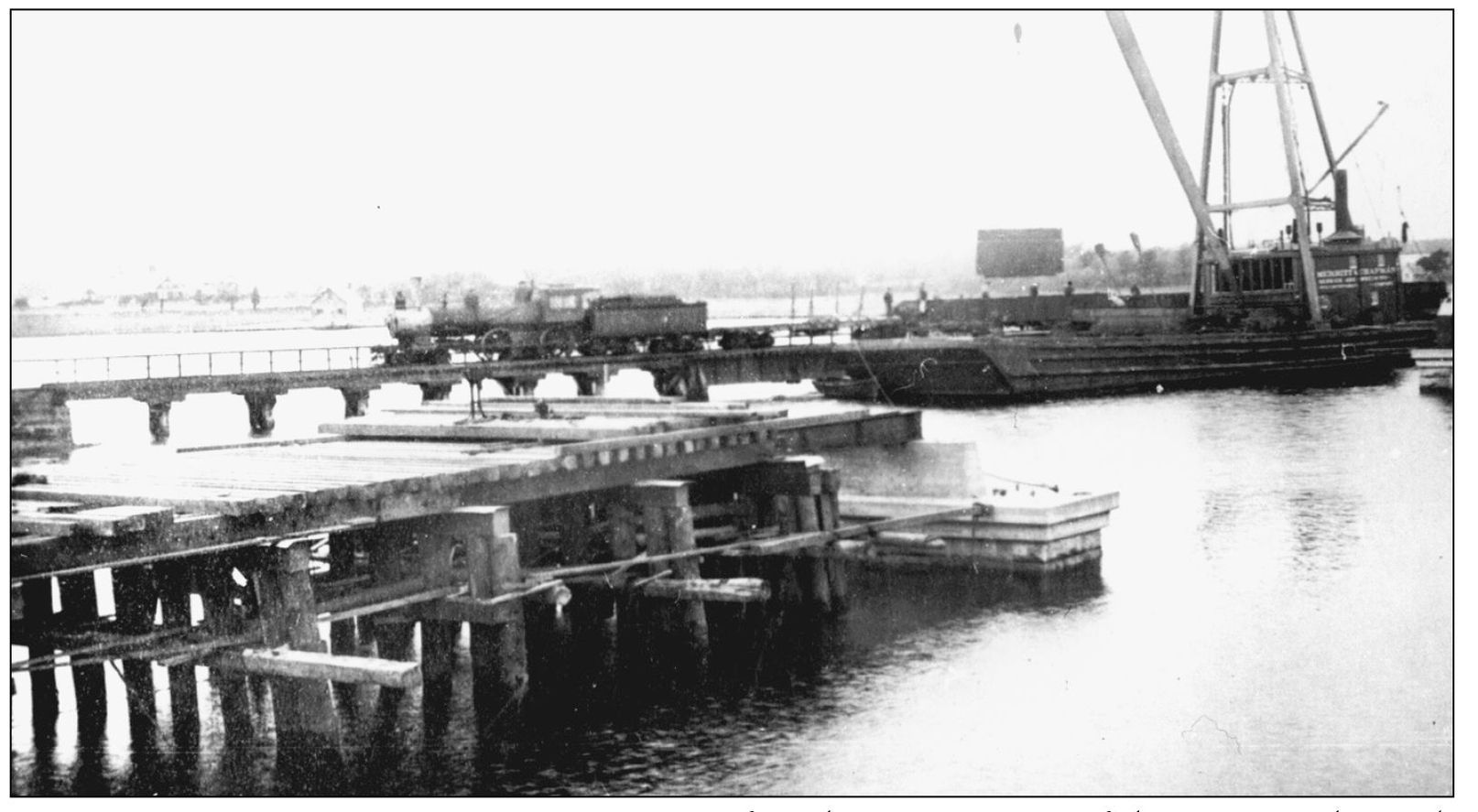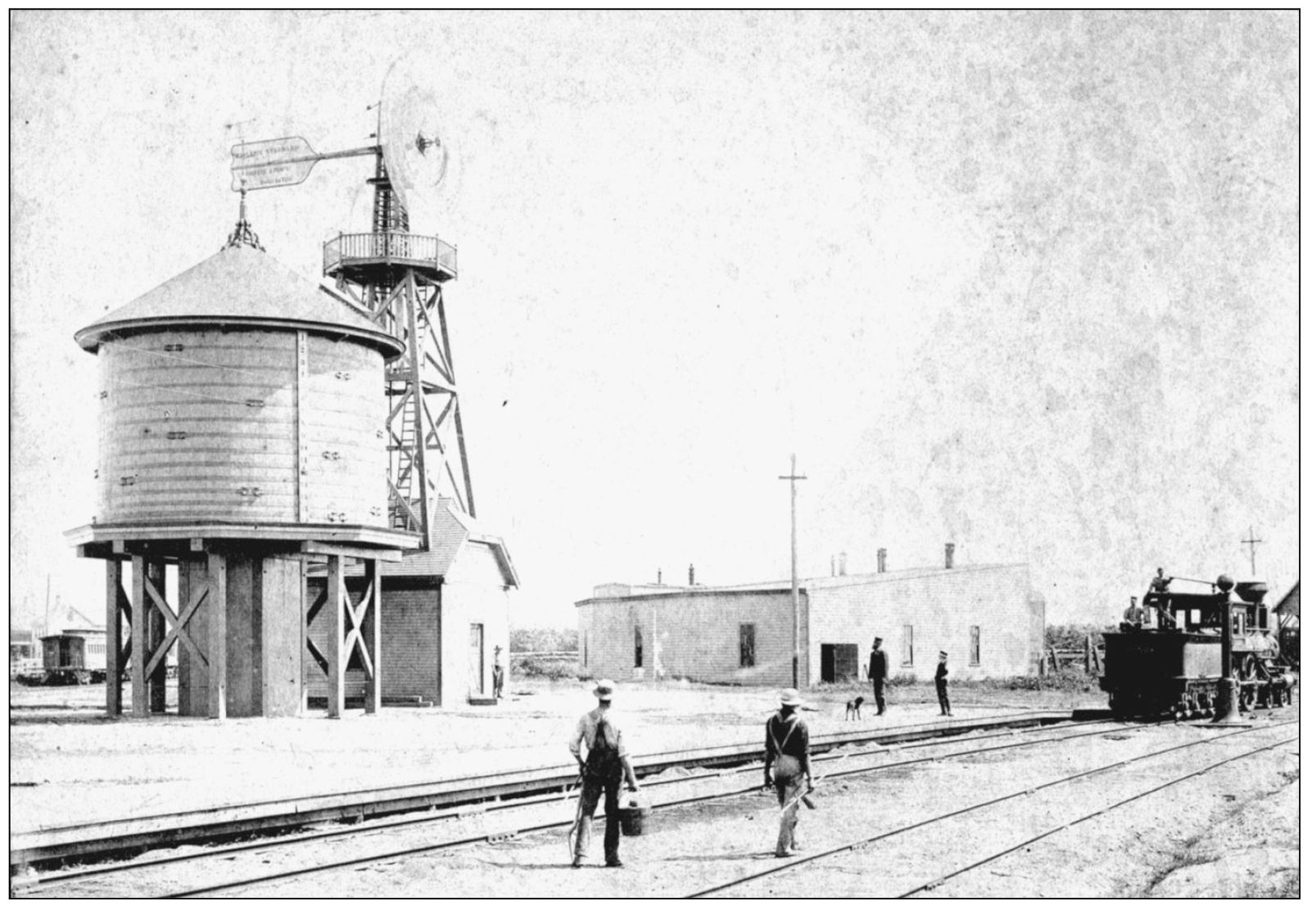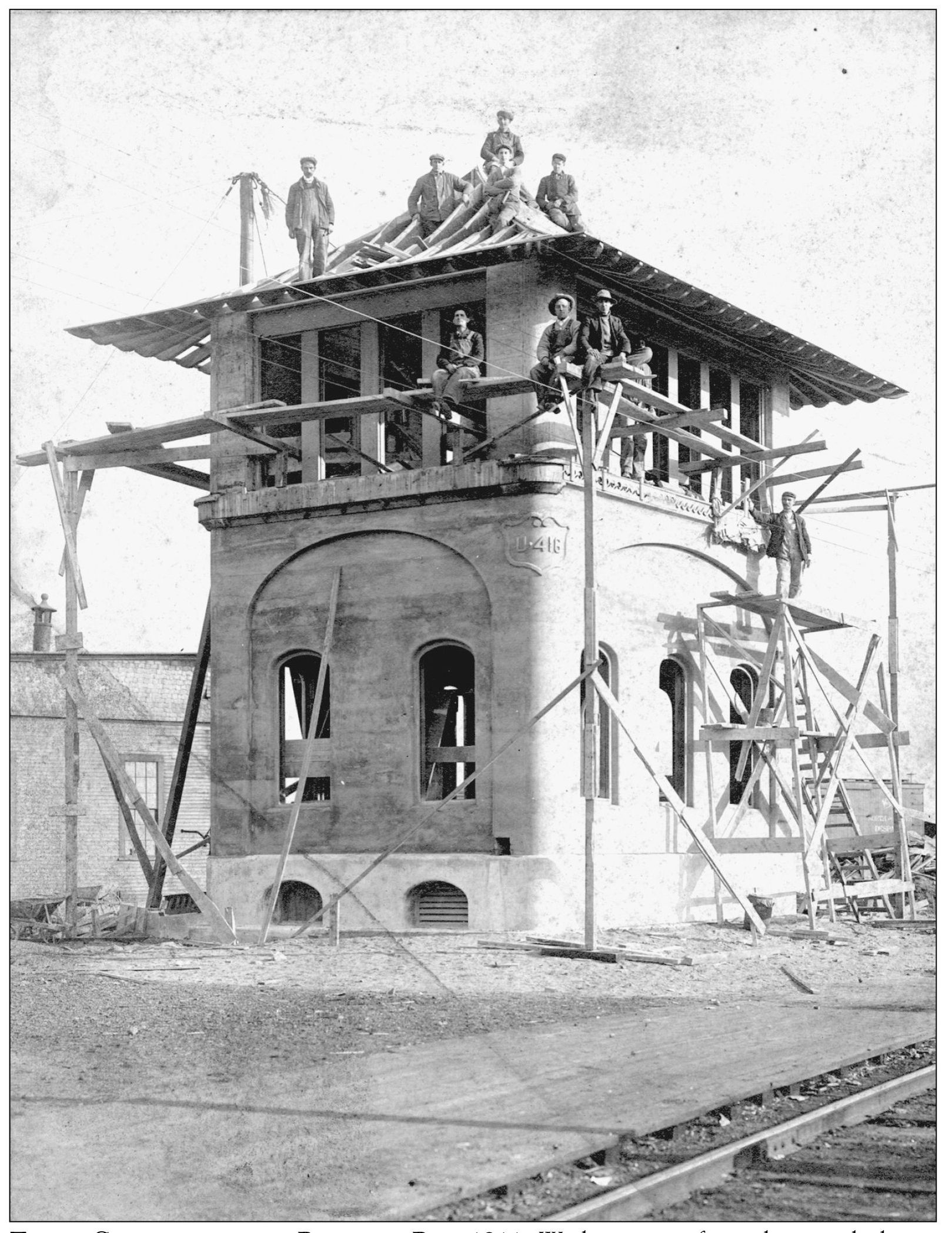I am indebted to my parents, Marilyn Fifield and Richard O. Eldredge, for chasing trains and encouraging my rail interest throughout my life and, most recently, for their assistance in the process of compiling this book. This publication itself is a tribute to all who contributed, but especially to Howard Goodwin, who generously shared both his extensive knowledge of rail history and his impressive personal collection of historic postcards and photographs. In addition, I deeply appreciate vital contributions of expertise and photographs from all of the following individuals: Philip H. Choate, Herb Clark, Kevin T. Farrell, Robert Farson, Robert Fifield, John Kennedy, Michael OConnor, William Reidy, Dave Santos, Doug Scott, Allen F. Speight, and Robert Thompson. For research assistance and access to archives, special thanks are due to Barbara Gill of the Sandwich Archives; Pat Margolies of the Bourne Historical Archives; Mary Sicchio, Nickerson Room librarian at Cape Cod Community College; and editor David Still II and the staff of the Barnstable Patriot.
BIBLIOGRAPHY
Burling, Francis P. The Birth of the Cape Cod National Seashore. Plymouth, Massachusetts: Leyden Press, 1977.
Farson, Robert H. Cape Cod Railroads: Including Marthas Vineyard and Nantucket. Yarmouth Port, Massachusetts: Cape Cod Historical Publications, 1990.
Karr, Ronald Dale. Lost Railroads of New England, 2nd Edition. Pepperell, Massachusetts: Branch Line Press, 1996.
. The Rail Lines of Southern New England. Pepperell, Massachusetts: Branch Line Press, 1995.
Lancaster, Clay. The Far-Out Island Railroad, 18791918: Nantuckets Old Summer Narrow-Gauge. Nantucket, Massachusetts: Pleasant Publications, 1972.
Levasseur, Paul E. An Old Colony Dude. S horeliner: Vol. 15, Issue 2, 1984.
OConnell, James C. Becoming Cape Cod: Creating a Seaside Resort. Lebanon, New Hampshire: University Press of New England, 2003.
Reidy, William. The Bay Colony Railroad. Shoreliner: Vol. 17, Issue 1, 1986.
. Gateway to Cape Cod: Buzzards Bay Bridge. Shoreliner: Vol. 16, Issue 2, 1985.
. Massachusetts Rail News: The Return of the Cape Codder. Shoreliner: Vol. 17, Issue 3, 1986.
Rosenbaum, Joel. Route of the Cape Codders and Neptunes. Shoreliner: Vol. 17, Issue 1, 1986.
Sokolosky, William C. A History of Railroads in Yarmouth Massachusetts. Yarmouth Port, Massachusetts: Historical Society of Old Yarmouth, 1975.
Swanberg, J.W. New Haven Power: 18381968. Medina, Ohio: Alvin F. Staufer, 1988.
Three Centuries of the Cape Cod County Barnstable, Massachusetts: 1685 to 1985. Barnstable, Massachusetts: Barnstable County, 1985.
Find more books like this at
www.imagesofamerica.com
Search for your hometown history, your old
stomping grounds, and even your favorite sports team.
One
BUZZARDS BAY TO HYANNIS
BUZZARDS BAY, 1871. This station was named Cohasset Narrows until August 1, 1879, when it was renamed Buzzards Bay. In 1872, an interlocking tower was constructed here, along with the completion of the new branch to Woods Hole. The tracks to the left in this photograph are the main line to the Cape. The tracks to the right are only yard tracks, although the Woods Hole branch later joined here. (Courtesy of Howard Goodwin.)
BUZZARDS BAY, THE EARLY 1900S. This view looks up the Woods Hole branch toward the station and junction with the Cape main line. The pipes to the left of the second track run up to the interlocking tower and through a system of levers to control the track switches and semaphore signals at Buzzards Bay. (Courtesy of Howard Goodwin.)
BUZZARDS BAY, 1908. This photograph shows how the line to Woods Hole branched off the main line to Hyannis and Provincetown at Buzzards Bay. The Hyannis-Provincetown line is to the right. To the left of the station is a train on the Woods Hole branch. Although there was no moveable bridge to control, the interlocking tower was in control of all the track switches and semaphore signals at the junction of the two lines. The tower was replaced in 1911 with a concrete one still in use today. (Courtesy of Howard Goodwin.)
BUSTLING BUZZARDS BAY, 1909. In this view of the Monument River, construction of the new bascule bridge is under way. Next to the Shore Road bridge across the river, a dredge is working on widening and deepening the river in preparation for the canal. To get this equipment into the Monument River, the railroad temporarily removed a part of its bridge on the Woods Hole branch and then promptly replaced it once the machinery was on the other side. (Courtesy of Howard Goodwin.)
RAILROAD BRIDGE CONSTRUCTION, 1910. Before the construction of the Cape Cod Canal, the railroad crossed the Monument River on fixed trestles, including the one pictured here. The train on the trestle (on the Woods Hole branch) is delivering steel for the construction of the new bascule bridge. The bridge was completed in September 1910. However, due to a delay in relocating the tracks on both sides, it was not used for rail movement for at least another year. (Courtesy of Howard Goodwin.)
BUZZARDS BAY, THE EARLY 1900S. A 4-4-0 American-type locomotive is taking on water at Buzzards Bay in this rare view that includes the enginehouse. Interestingly, Buzzards Bay never had a turntable, but there was a wye track that could be used to turn entire trains. (Courtesy of the Bourne Archives.)
BUZZARDS BAY, THE LATE 1800s. This view looks up the Cape main line toward the station at Buzzards Bay. The windmill, water tank, and interlocking tower can be spotted in the distance. (Courtesy of the Bourne Archives.)
TOWER CONSTRUCTION AT BUZZARDS BAY, 1911. Workmen pose for a photograph during construction of the interlocking tower. The tower still controls daily train movements. (Courtesy of the Bourne Archives.)











